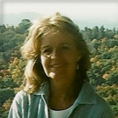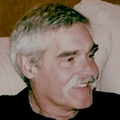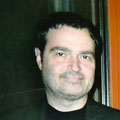The Light of a Greater Spirit
By Alta Campbell
March 1996
My sister lay flat on her back in the hospital bed, her head rendered immobile by the heavy weights that connected to a metal head brace and hung down behind the bed. Screwed in tight to her skull, the brace held her firm against the mattress.
My beautiful sister. I sat beside the bed and watched her profile, outlined against the bare, white hospital wall, and thought how perfect it was — an artist model’s profile. Her forehead sloped gently into the straight line of her nose; her mouth curved softly into the rounded right angle of her chin; her high cheekbones slanted across the top of her pale cheeks. She was so lovely, lying motionless in the white bed. Her neck was broken.
She had missed death by the thickness of a fingernail, the doctor said, and she wasn’t paralyzed — but she would take a long time to heal. They were going to graft bone from her hip to her neck to brace the broken vertebrae — there were five. She would have to wear a halo traction brace for months. Though her neck would never have its former flexibility, eventually she would be strong enough to lead a normal life, if all went well. We were very grateful for that.
She told us about the halo traction brace, describing what it looked like, how it worked, and we were morbidly fascinated with the horror of it, the mental picture of her in this medieval thing. It was a metal and plastic contraption that would extend from her head to her waist, completely encasing her upper body, except for her arms.
A metal “halo” would be screwed into her skull in four places, two on each side of her head, and connected to strong metal rods that would extend to her chest, holding her neck in place so she could not move it. Though the brace would obviously curtail her mobility, she could move her arms, walk around in it, and lie down. And it would help her heal.
We talked about that and fed her ice. Her mouth was dry. And we talked about her accident at first. Her accident and her injuries—those were all we could talk about the first few days. We played the scene over and over in our minds, and though I hadn’t been with her, I can see it still: my sister on her way to work driving down the narrow country road, the man turning sharply and unexpectedly in front of her, directly into her car, the sudden impact and my sister thrown forward. She wore no seat belt. She wouldn’t then.
I can see all this, and now that I live near her again, I think of it sometimes as I drive that same road to her house, but long before I was very familiar with the road, the scene was etched clearly in my mind, the way those scenes are that have a great impact on us. It was frozen there and would stay.
We wanted to know every detail of the accident — what she remembered, how she had felt, who was there. She had wrecked near her brother-in-law’s house. He was leaving for work when he heard the crash and then, with sinking heart, saw that it was my sister’s car. He guarded her, refusing to let anyone move her until help arrived.
She was unconscious when the ambulance got there, and they woke her. Her forehead was cut. They put a collar on her neck and a board under her before moving her into the ambulance. Their carefulness probably saved her life.
At the hospital the medical personnel treated her cuts and were preparing to release her, when the doctor asked if anything else hurt. My sister said her throat was closing up, she couldn’t swallow, so the doctor sent her for X-rays. She was fairly alert by then, and they had taken the brace off her neck, but as soon as the doctor saw the X-rays and realized her neck was broken, he put the brace back on, placed her on a board, and sent her by ambulance to a larger hospital, where they put her into traction in the bed she would occupy for three weeks.
When my mother first called me in Texas, she said the accident wasn’t bad. My sister was all right. That was before they knew about her neck. I remember the call clearly. It was in March, on a Wednesday. Then later my mother called again and said the first reports were wrong. My sister was hurt — her neck was broken and she was in traction.
It is very difficult to live far away from your family when they are hurt. You can’t be part of the processing of the shock, the constant calling, visiting, and sharing of information, and the eventual acceptance and integration of the new state of affairs. I felt helpless, frightened and cut off, unable to verify with my own eyes the extent of her injuries, the extent of the danger. I knew phone calls would never satisfy me. By Friday I was on a plane heading home to Maryland.
The next day I took my position by my sister’s bed, and that is where I stayed for a week — watching her profile, absorbing the reality of her accident and facing my own terror at the thought of losing her, this sister who had shared my life for 35 years. I wondered how long it had been since I had sat and looked at her this way, if I ever had. My visits home were swirls of holiday gatherings, when moments alone with any individual in our large family were precious few.
It is amazing sometimes how the human mind adapts to tragedy. A calm settles and things slow down. Everything gets quiet, and we begin to take more deliberate steps, existing in some realm outside our normal hectic pace. I stopped everything in my life and sat with my sister, and for that time nothing mattered much but her condition and the routine of the hospital — when she ate, what the doctors said, what the next medical step was, who was visiting that day.
I pulled in the boundaries of my world and put the rest of my life on temporary hold. It is surprising how easy it is to do that when we must. All those pressing appointments and urgent documents somehow manage to wait.
There is much to be learned in those moments when life becomes compressed to its crystalline center, when survival is at stake. We go to the core then, to the things that are really important, and give them our full attention. This kind of focus is satisfying in its purity, its sheer intensity. And that is when we see things.
I saw my sister’s beauty, and though I knew her beauty wasn’t the most important thing about her, it was the most striking and the most sad at this moment. The calm loveliness of her face contrasted so sharply with the harsh reality that surrounded her, with the cold metallic horror of the weights holding her head in place. Her beauty symbolized to me the great sadness of what had happened to her — and her courage in the face of it. For she bore her pain heroically, maintaining a sense of humor, laughing with the nurses and doctors. She didn’t complain or bemoan her fate. She accepted it and fought to get better. This had happened to her. She must deal with it.
I didn’t know what she was feeling then, for my family never spoke of emotions. We helped each other, but we didn’t cry much. We hid our more tender feelings. There were no emotional displays of affection, no proclamations of caring.
So I just sat there by her bed, sharing her days, talking with a steady parade of visitors, feeding her and helping her in other ways when I could, and forming permanent pictures in my mind. I didn’t know what my sister was thinking on any deeper level because she didn’t talk about it. She spoke only of the surface things of our day and of when she could go home.
_______________
It took many months, but my sister did heal. She grew very thin, a frail skeleton inside the rigid bars of the halo traction brace, worrying all of us as we watched her wince with pain and tire so easily. But she kept going — running her life in spite of the brace, attracting curious queries wherever she went — and the day finally came, after seven months, when the brace was removed and she was free again. Since then her recovery has been steady. Though her neck still bothers her if she is overtired, giving her wrenching headaches, for the most part her life is normal.
Since I moved back to Maryland, we visit more often and sometimes we talk of the accident. When we do, I see again her pale profile against the hospital wall and remember those quiet days by her bedside and her soft beauty. I never knew what was in her mind then, so I was amazed recently — ten years after the accident — when she told me, revealing a memory so stark in its drama that I asked why she had not talked of it before. She said she didn’t know. She just hadn’t. Perhaps it was too personal.
She told me she had been near death two different times after that accident — once when she first arrived at the second hospital and again after surgery, in the recovery room. The second time she had, for a moment, actually died. Fully aware that she was dying, she heard the nurse say, “Her blood pressure’s dropping. I can’t get a pulse. We’re losing her!”
She remembered floating down a long tunnel with a bright light at the end. She felt very warm, content, and peaceful but was surprised to be dying. “Oh, no,” she recalls saying to herself, “I’m dying. I’m actually dying.” There was a clarity, an awareness of what was happening to her.
Suddenly she was pulled back from death, unexpectedly saved and moved out of the tunnel and away from the bright light. The next thing she remembered she was back in her room, very thirsty and asking me for water.
She didn’t know why she came back, but she told me she figured God had saved her for some purpose — perhaps to raise her children, who were young and still needed her. She didn’t know.
I don’t know either and since her story is not over, maybe the reason has not yet been revealed. But I do know one thing. Knowing that she died makes my mental pictures seem even more significant. It may explain why her beauty was so dramatic to me. There was something ethereal about it, a glow to her face. At the time I was so sad that I thought I was just noticing it more than usual because we had almost lost her and because the beauty contrasted so with the horror of her broken body. But now I wonder. Now I think there was something else.
I don’t know what is spiritual truth, but I do strongly feel this: there is a force greater than I. Perhaps that force, in some form, was present in my sister’s room that March day, hovering gently over her, shining soft protection around her body and giving her strength. Perhaps that is why her profile has formed such an indelible and lovely picture in my mind — upon her face that day shone the light of a greater spirit.






